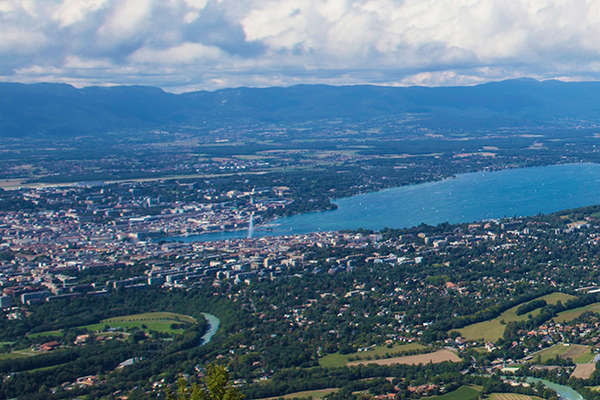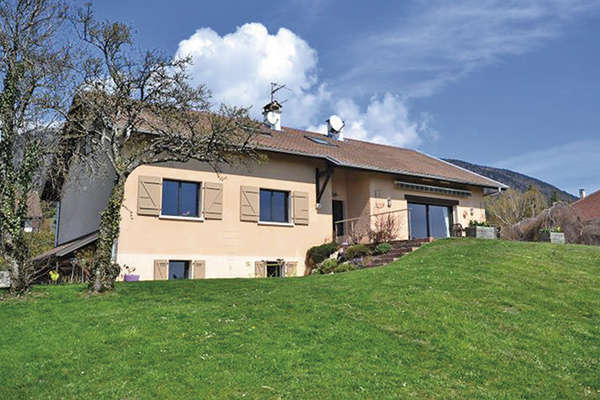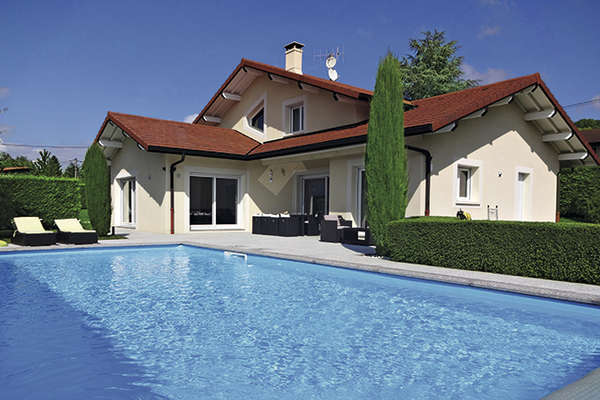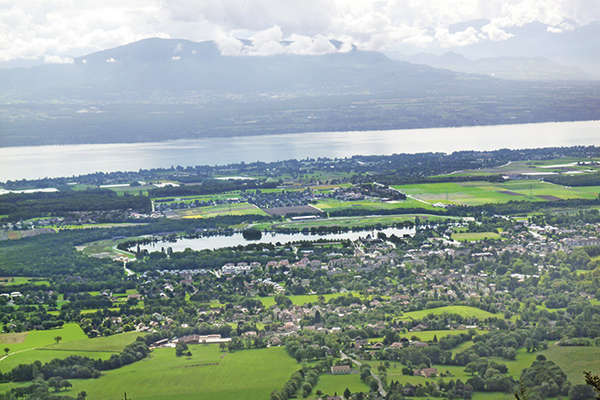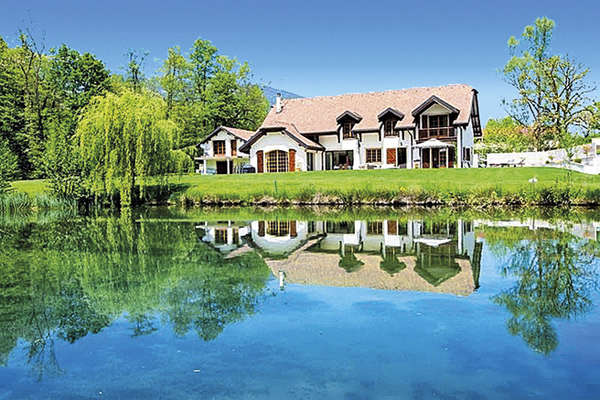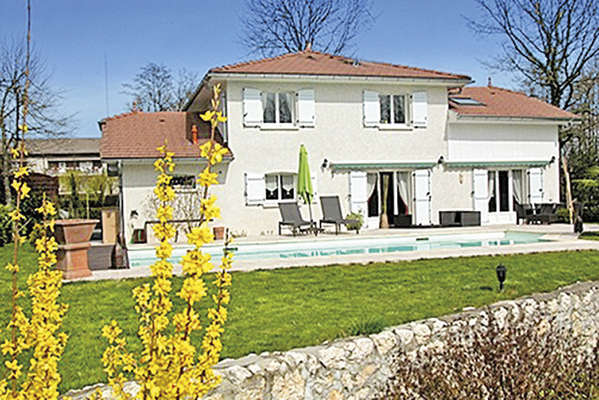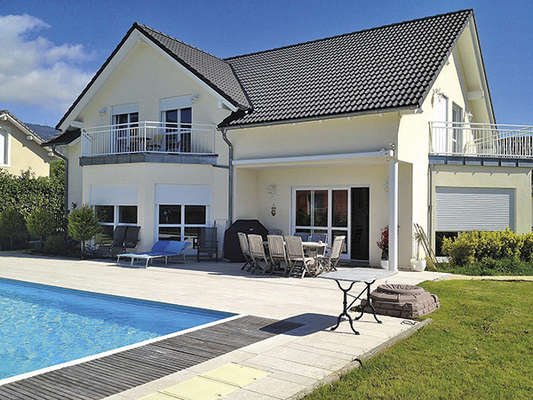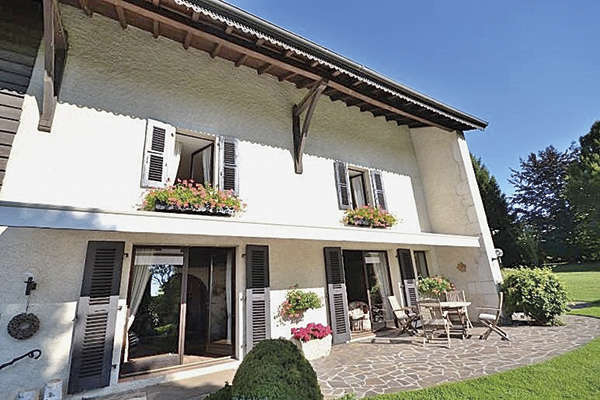Béziers, 2,700 years of history
By Laetitia Rossi - 21 June 2010
The second largest town in L’Hérault with 72,500 inhabitants overlooks the Orb and the Canal du Midi. Set amidst the world’s largest vineyard region, it is also a mere 10 km from the Mediterranean and 50 km from the first mountain peaks. Focus on a property market which is still rather subdued...
In Béziers, the proportion of agricultural areas, gardens and parks outstrips the urbanized area. The head office of the Chamber of Commerce and Industry also earns its income from viticulture and tourism. The town is home to the nine locks of Fonsérannes, a site listed as a World Heritage Site by UNESCO, like the Pont de l'Orb and the Canal du Midi, the third most visited destination in the Languedoc-Roussillon region after the Pont du Gard and the “cité” of Carcassonne. Only 8 km separate the locality from an 18-hole golf-course. A good range of facilities and a dense network of sports and cultural associations enliven day-to-day living for the inhabitants of the town, built at the crossroads of motorways leading to Paris and major cities in the south of France.
“If alarmist rhetoric has had its day, we can’t yet say there’s a perfect balance between supply and demand. Both buyers and sellers are anxious, feverish, not yet ready to make decisions. However, Béziers’ potential is in no doubt,” comments Michaël Canaveira of the Agence Belon. The town attracts French retirees in search of the sun. 70 % of them pay - usually in cash - 220,000 to 250,000 € for recent bungalows of 100 m2 with gardens of 400 m2 on estates that are not too leafy and often far from shops, or houses built in the 1980’s, close to amenities but frequently with outdated appointments. Some manage to muster 300,000 €, a sum enabling them to obtain more privacy and more generous gardens, of about 800 m2, benefitting from, or big enough to accommodate, a pool. First-time buyers are either looking for housing to renovate, from 100,000 to150,000 €, or a new property costing from 150,000 to 180,000 €, to benefit from the dual loan rate at 0 %. Until 2008, there were lots of investors around, motivated by good rental income. Now thinner on the ground, they are currently aiming for asset appreciation and rock-solid investments in safe and sought-after neighbourhoods, with the luckiest expecting a yield of about 6 %. Those who decide to target cheaper housing obtain a better immediate gain. In fact, rents are proportionately much higher compared to the cost of buying. Whichever option is finally adopted, financial investments are totally unable to compete with bricks and mortar. The rental market actually works in bi-polar mode : the demand is focused on the lowest end of the range or on luxury residences. “Between the two, demand is scarce,” says our specialist.
“We won’t see any recovery from the crisis without the support of the entire profession. And that starts as soon as the agency takes on a property and makes an estimate of its value. Sellers are still hesitant and buyers must be realistic and keep their proposals in line with the market, which is now pretty much coherent,” advises Frédéric Martinez of F2M Immo. Young cou-ples dream of homes with terraces or gardens leading out directly from the lounge. Whether in the case of a townhouse or 2-bedroom apartment opening out to a terrace, convenience is also a priority. Boujan, Lignan-sur-Orb, Maraussan and Maureilhan all have their fans. Some senior citizens have budgets of 500,000 € for a property of good quality, 250 m2 with grounds of 1,000 m2 and beyond. Within the town itself, clear preferences seem to apply for one or another neighbourhood. Many buyers set their sights on Les Peintres and Les Fleurs, characterized by apartment blocks on a human scale mixed with small houses near the centre. The historic heart of town - Champ de Mars, Arènes and Cliniques - is apparently regaining its aura of yesteryear thanks to very extensive rehabilitation of buildings of character and many facilities including the mediatheque and university faculties. Conversely, Madeleine and Les Halles, neighbourhoods once stormed by investors, seem to be deteriorating, despite the efforts of the municipality. “And yet they contain bourgeois apartments, Haussmann buildings and private mansions, very reasonably priced from 900 to 1,400 €/m2, depending on their condition,” notes Jean-Louis Dreuille of the agency Via Sud Immobilier.
“On the buyers’ side, the trend today is for energy performance,” he adds, “a niche that I’m one of the few developers to have worked on in Béziers, for the past six years already”. Of the 14 houses compris-ing the “Hameau de Montaury”, five are still available. A 2-bedroom house costs 185,000 €, a 3-bedroomed (no longer available), 225,000 €. This concept of individual homes with garden-terraces of 40 m2 and two parking places is very popular. It reinforces sociability and is completely in line with the policy of densification, a concept inherent in sustainable development, without undermining the home-owner’s autonomy. Jean-Louis Dreuille is in fact looking forward to delivery of a third community of this type in September 2011, to be marketed from September, 2010. Playing a double hand, he readily admits that older properties are ultra-competitive. Recently, he handled the sale of a 2-bedroom apartment of 70 m2 in need of refurbishment for 65,000 €, a “pavillon” of 90 m2 with a garden of 500 m2 at Les Fleurs for 238,000 €, and a house of 140 m2 in good condition, in grounds of 1,700 m2 in a pleasant village on the immediate outskirts, for 340,000 €. As for the high end of the market, it ranges from 400,000 to 600,000 € for villas, 350,000 to 450,000 € for quality old residences and 250,000 to 320,000 € for “vigneronnes” (wine-makers’ houses). As an example of exceptions taking many varied forms, an Englishman living in Moscow and looking forward to retirement, has just treated himself to a property of 400 m2 in almost 2.5 acres of wooded grounds with a pool, for 630,000 €. This category of homes also exists, but is slow to find a clientele, notably due to poorly defined estimates of their value.
